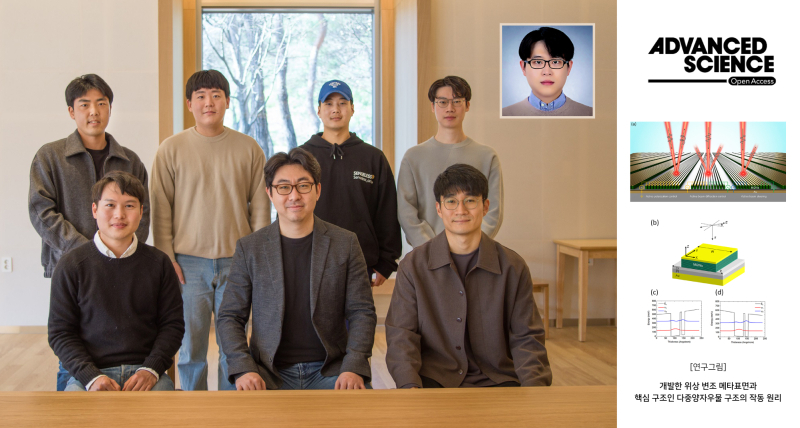Metasurfaces, two-dimensional metamaterials with planar and ultrathin nanostructures, have the characteristics of lightweight, ultra-thin thickness, and tiny size. They can also impart control over the phase, polarization, and local wavefront of the light at deep-subwavelength scales. However, it is found that most metasurfaces that have been reported so far are passive devices, and there have been limitations in applying them in various ways because optical properties and functions cannot be changed after manufacturing.
A research team, led by Professor Jongwon Lee in the Department of Electrical and Electronic Engineering at UNIST has proposed and experimentally demonstrated electrically tunable intersubband polaritonic metasurfaces, in which the polaritonic spectral and phase were controlled by an external bias voltage through the quantum-confined Stark effect (QCSE) associated with the IST in the multiple quantum well (MQW) semiconductor material.

Figure 1. Electrically tunable polaritonic metasurfaces. Schematic illustration of electrically tunable polaritonic metasurfaces and their applications. An multiple quantum well (MQW) layer with giant electro-optic response is sandwiched between the bottom gold ground plane and top gold layer in double-metal ridge resonators, in which the local phase of x-polarized beam is controlled by the bias voltage applied. Electrical control of beam polarization state (left), tunable beam diffraction control (middle), and tunable beam steering (right) are demonstrated in a single device through the polarization-sensitive local phase tuning.
Using an array of ridge metal-MQW-metal resonators, the research team also experimentally demonstrated the multifunctional operation of their metasurface as an electrical polarization state control device and beam steering device.
This advanced feature, according to the research team, comes with a high modulation speed and can be utilized at a relatively low driving voltage. They also noted that the reflection efficiency of the device may be improved using IST with narrower linewidth which can be obtained by using the barrier modulation doping technique.
“The electrically tunable polaritonic metasurface may open new pathways for innovative applications, such as spatial light modulators, varifocal metalenses, and dynamic holography,” noted Professor Lee.
Their findings have been published online in Advanced Science, ahead of the print version on April 7, 2023.
Journal Reference
Hyeongju Chung, Inyong Hwang, Jaeyeon Yu, et al., “Electrical Phase Modulation Based on Mid-Infrared Intersubband Polaritonic Metasurfaces,” Adv. Sci., (2023).












